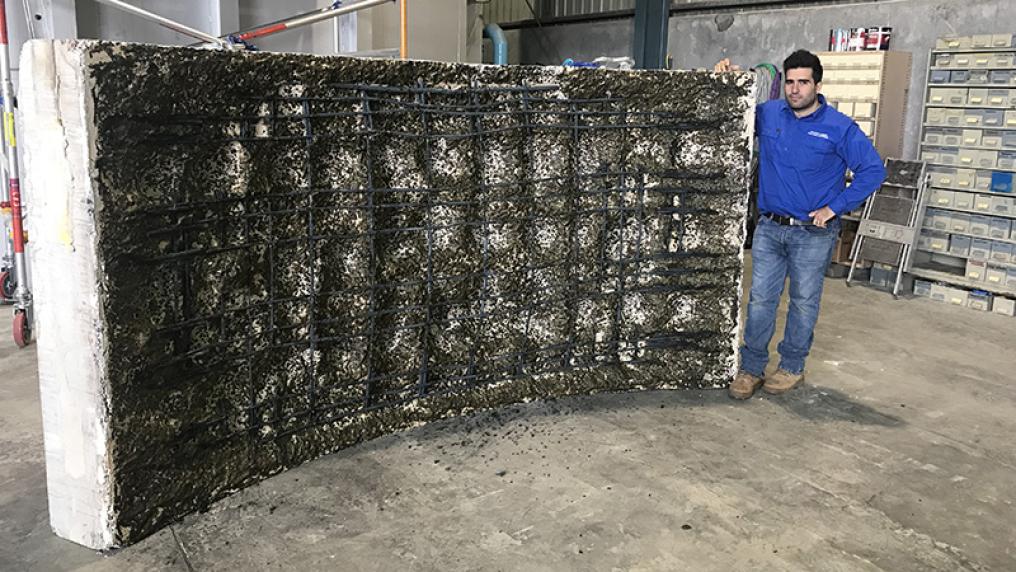VU fire-testing expertise

A team of Victoria University engineers is leading research that can be used worldwide to prevent concrete tunnels from collapsing due to explosions and fires.
As more cities in Australia and overseas dig deep underground to build congestion-busting car and train tunnels, Dr Maurice Guerrieri is using his expertise in ‘concrete spalling’ to test how various concrete samples respond to fire.
Victoria University is well equipped for fire testing, with a $1.2 million fire-test furnace funded by the Australian Research Council and a $400,000 VU-designed testing rig at VU’s Werribee Campus. Using these facilities, Dr Guerrieri is working on major tunnel projects to ensure they meet relevant fire-testing standards.
VU specialists working to prevent tunnel collapse
Dr Guerrieri, one of the world’s only concrete spalling specialists, has been testing several concrete samples with various ratios of aggregate rock, sand, gravel and cement in temperatures of up to 1300 degrees centigrade to test for spalling since late last year.
Spalling occurs when small pieces of concrete explode during fire or mechanical pressure, weakening the concrete and putting tunnels at risk of collapse. It has been linked to tunnel disasters and deaths overseas, including the Mount Blanc and St Gottard Tunnels in Switzerland (1999 and 2002 respectively).
New tunnels are raising testing standards
While a number of tunnels have undertaken concrete spalling tests for their material selection (tested by Dr Guerrieri), Victoria University is the first organisation outside Europe to design and install specialised test rigs that can test tunnel segments under full-scale structural fire loading.
“Until recently, test segments had to be sent to Germany and the Netherlands to complete the required testing,” said Dr Guerrieri.
“Our fire facilities are unique in the country and Victoria University will become Australia’s prime structural fire-testing laboratory centre able to test every fire curve in the world to the highest of international standards.”
Dr Guerrieri is currently undergoing accreditation by the National Association of Testing Authorities (NATA), Australia’s peak body responsible for benchmarking facilities at national or international standards.
While having the right composition of concrete is important, Dr Guerrieri points out that transporting large amounts of the construction material is a major cost in such a large infrastructure project, meaning that project designers try to source local concrete as much as possible.
View a video of VU's structural fire test facility.
Dr Guerrieri is a Senior Research Fellow in the Institute for Sustainable Industries and Liveable Cities (ISILC).



